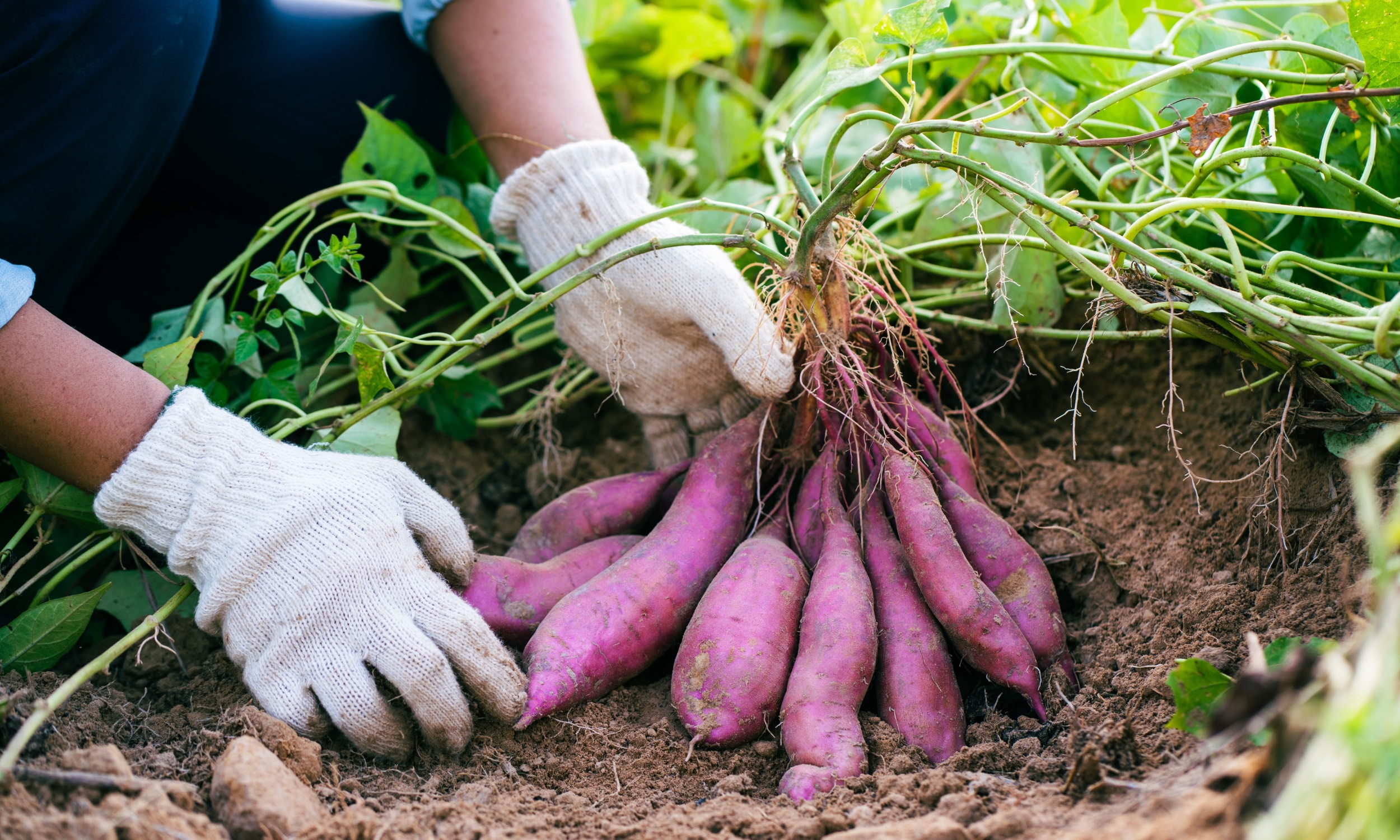Scientists have now mapped the complete set of chromosomes for the African sweet potato variety “Tanzania,” revealing that it arose from a mix of a wild Ecuadorian species and a Central American relative.
The achievement sheds light on the tangled origins of one of the world’s most important crops – an essential food for millions and a cornerstone of food security and biofortification efforts.
Unlike humans, who carry two sets of chromosomes, the sweet potato holds six. That genetic complexity makes its DNA unusually difficult to untangle and has long slowed efforts to breed improved sweetpotato varieties.
Sweet potato DNA is tricky
The study was led by Professor Zhangjun Fei at the Boyce Thompson Institute (BTI) in Ithaca, New York. His team specializes in building genomic resources that shorten the path from trait to gene for crops.
That complexity starts with hexaploidy – the condition of carrying six complete sets of chromosomes. It forces researchers to keep track of similar copies while avoiding false merges that blur meaningful differences.
To do that, the authors resolved each haplotype, the specific sequence carried on each chromosome copy. They also kept those copies separate through phasing, which prevents the common problem of averaging signals across distinct genomes.
Working in “Tanzania,” an African cultivar widely used by breeders, the group assembled chromosome-scale sequences for all six genome copies. That gives a clean scaffold for downstream population studies and trait mapping.
All 90 chromosomes mapped
The new assembly spans all 90 chromosomes, with each homolog distinguished rather than collapsed. It offers a reference that finally matches the biological reality of a six-copy genome.
“The sequences contributed by different wild species are not distributed in typical subgenomes but are intertwined along chromosomes, possibly owing to the known non-preferential recombination among sweetpotato haplotypes,” wrote Shan Wu, the study’s first author.
Wu’s description matches the team’s phased maps and explains why earlier models struggled to cleanly separate ancestral blocks.
This pattern differs from crops like bread wheat where ancestral contributions often line up in larger, more discrete blocks. In sweet potato, chromosomes mix in a fine-grained pattern.
That intertwined layout matters because trait loci can sit on segments from different ancestors – even within a single chromosome. Selection will need that context to avoid dragging along unwanted variants.
Tracing sweet potato’s wild origins
A sizable share of the genome traces to Ipomoea aequatoriensis, a wild tetraploid from coastal Ecuador that was formally described in 2022. That discovery filled a key gap between diploid relatives and the cultivated hexaploid.
Another large portion aligns with a Central American wild relative often referred to as I. batatas 4x. The precise donor may still be unsampled in the wild, which keeps exploration active across Mesoamerica.
Together, these data explain how a hexaploid crop could arise through hybridization and subsequent recombination. The history is written in small, alternating tracts rather than continent-sized blocks.
That mosaic signature should help breeders link trait variation to its ancestral source. Breeders can now hunt for disease resistance, quality, and adaptation using that geographic and evolutionary context.
Sweet potato DNA is finely mixed
The authors interpret the new evidence as consistent with a segmental allopolyploid, a system where parts of the genome behave like an allopolyploid while others retain autopolyploid-like mixing. It is a label that accounts for the observed interweaving across haplotypes.
In practice, that means selection and recombination can shuffle segments among homeologous chromosomes after the initial hybrid forms. Over time, those shuffles can complicate neat boundaries between ancestral genomes.
The sweet potato map shows just how pervasive that shuffling has been. It also sets the stage for tracking which exchanges correlate with yield, quality, or resilience.
Multiple genomes, stronger crop
The sweet potato’s status as a polyploid can buffer deleterious mutations through extra gene copies. Redundant copies sometimes pick up changes that help the plant tolerate stress or pathogens.
Experimental and comparative studies support the link between polyploidy and stress tolerance, adaptation, and survival under harsh conditions across plants. That context helps explain the crop’s stability in variable climates.
The new sweet potato map shows how that force has played out in a food crop. Many of the world’s staple crops also carry multiple chromosome sets, which means the tools proven here are relevant beyond one species. Techniques that cleanly separate genome copies will continue to pay off across breeding programs.
Sweet potato map advances food security
A phased reference lets researchers follow each allele through a six-copy genome without losing track of dosage. For traits that depend on the number of favorable copies, that precision is essential.
Recent work in Nature Plants shows how allele dosage shapes dozens of agronomic traits in sweet potatoes and how breeding has shifted dosages over time. The “Tanzania” reference adds the structural and ancestral context those dosage studies need.
With the new map, breeders can test whether a resistance locus sits on an Ecuadorian or Central American segment, then design markers that capture the right ancestries. That reduces linkage drag and preserves key quality attributes while improving stress responses.
The assembly also provides a framework for pan-genome efforts that catalog variation across regions and markets. Layering multiple cultivars on a phased backbone will reveal rare, locally valuable segments that standard references often miss.
The study is published in the journal Nature Plants.
—–
Like what you read? Subscribe to our newsletter for engaging articles, exclusive content, and the latest updates.
Check us out on EarthSnap, a free app brought to you by Eric Ralls and Earth.com.
—–
